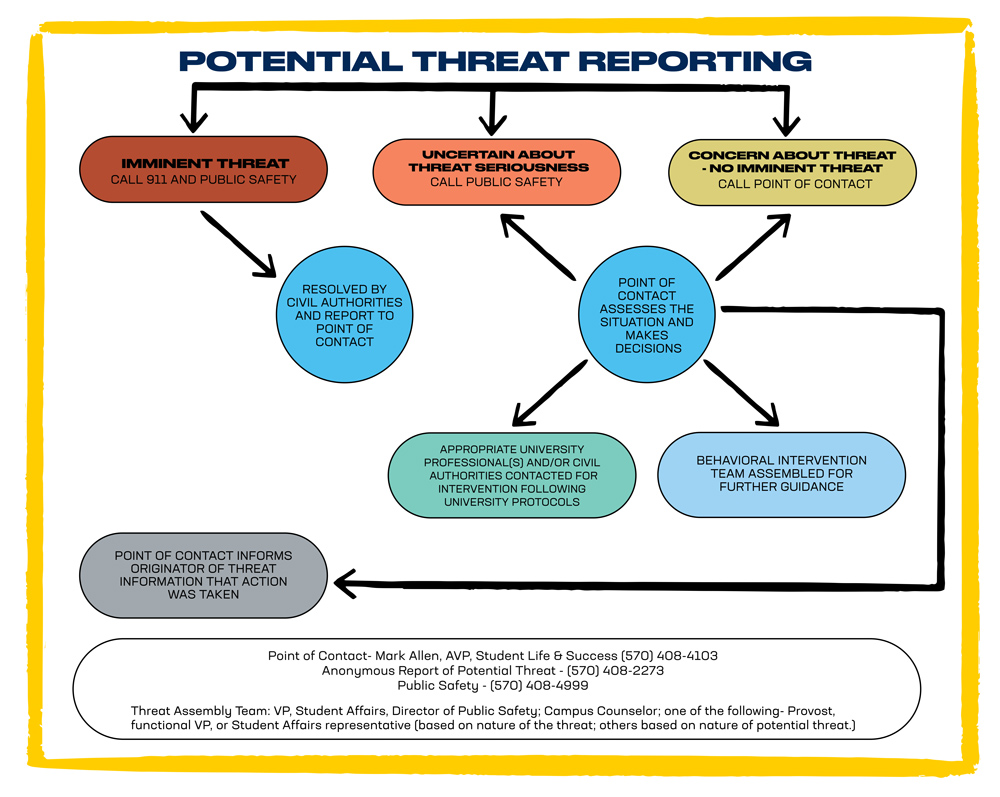Wilkes University strives to maintain an environment that is safe from any kind of threats to the community. This requires a proactive community approach to behavioral threat assessment.
Potential Threat Reporting
Threat Assessment
If you feel that a member of the campus community (student, staff, or faculty) presents behavior or language that appears threatening to the health and safety of himself/herself or others, you should do the following:
Imminent Threat
Example: You see a campus community member walking on the quadrangle with a weapon.
- If a threat is imminent, call 911 followed up by a call to University Police (ext. 4999).
- Threat is resolved by Civil Authorities and report to Behavioral Intervention Team Point of Contact.
Uncertain about Threat Seriousness
Example: A campus community member tells you that he saw another campus community member with a weapon.
- If you are uncertain about the immediacy of the threat, contact University Police (ext. 4999).
Concerned about Threat / No Imminent Threat
Example: A student writes something on his/her social media site that could be perceived as a threat to a member of the campus community.
- If the threat is viewed as less than imminent, please contact the Behavioral Intervention Team Point of Contact .
- If you wish to report threatening behavior and want to remain anonymous, you can call the CARE line at (570) 408-2273.
Behavioral Threat Assessment Process
When a potential threat is reported to the point of contact (AVP for Student Life & Success), he will determine the level of urgency and either refer the problem to the appropriate University professionals to resolve (non-urgent) or assemble the Behavioral Intervention Team. Members include: director of public safety; campus counselor; and one of the following based on the nature of the threat: provost (faculty), functional vice president (staff), or student affairs representative (students). Other professionals may be included depending on the nature of the potential threat. The Behavioral Intervention Team will gather information to make an informed and timely decision to resolve the potential threat. Anyone who reports a potential threat will receive follow-up information from the point of contact.
Once the potential threat has been assessed, the appropriate action will be taken guided by University policy (i.e., emergency action plan, student discipline process, involuntary suspension policy, etc.).
The Behavioral Threat Assessment Process is in place to proactively intervene before concerning behavior poses a real threat to the campus community. For it to be effective, all campus community members should err on the side of caution and report concerns to the appropriate campus resources.
